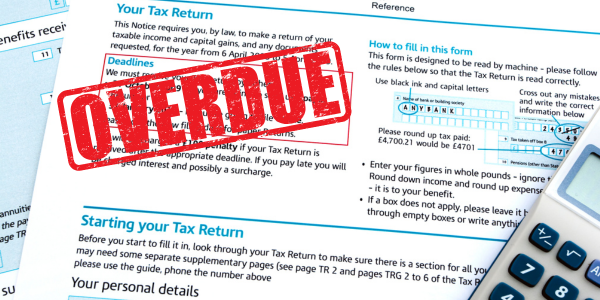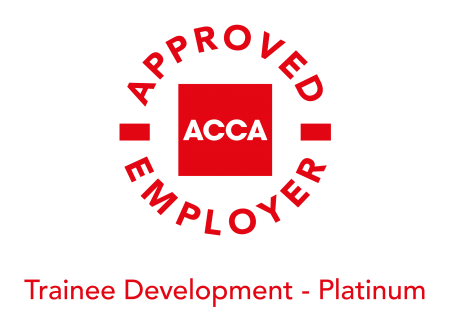Tax guide for small businesses
Setting up your own business is an exciting but daunting process. Careful planning is crucial, and it’s especially important to be crystal clear on tax obligations.
As you forecast profit and loss, you’re likely to have a host of questions and not a lot of time to discover the answers. But tax isn’t an area where you can afford to cut corners. Missing tax deadlines can lead to fines and prosecution, so it’s vital to familiarise yourself with the current tax landscape and how it affects your business.
Types of tax for business
In our guide below, we’ve listed the five key tax areas that limited company owners need to consider…
Corporation Tax
Company profits during a financial year (profit being the figure you reach after expenses) are liable to Corporation Tax. This is after allowing for a few items, such as depreciation, which whilst affecting a company’s trading profit, do not affect its taxable profit. The rate of Corporation Tax is currently set at 19%, but this figure can fluctuate – under the current government, it’s set to reduce to 17% by 2020.
When you register a new company with Companies House, Her Majesty’s Revenue and Customs (HMRC) will be automatically informed. A Corporation Tax registration form will be sent to your company’s registered office, along with information on how to get started. A Corporation Tax return must be filed online within 12 months of your company’s accounting period.
As HMRC is quick to point out, you will not receive a bill for Corporation Tax. The onus is on you – or the accountant working on your behalf – to calculate and pay the tax due.
PAYE and Income Tax
As the director of your own limited company, you can receive income in two main ways. These are:
- By paying yourself a salary as an employee of the company
- By drawing dividends in your capacity as director
These two types of income are taxed differently. Your salary is taxed through PAYE (pay as you earn), and is subject to a tax-free personal allowance just as it would be if you were an employee of any other firm. In the current 2018/2019 tax year, the tax-free allowance is £11,850. Above this figure the standard tax rate of 20% tax applies. A higher rate of 40% kicks in for earnings of £34,501 – £150,000 above the tax-free allowance, and the additional rate of 45% is due on earnings over £150,000. An individual’s personal allowance is reduced by £1 for every £2 they earn over £100,000. This means that you will have no personal allowance once your income for the year exceeds £123,700.
Dividends are sums of money paid by a company to its shareholders out of its profits. In the case of a small start-up, there may be only one shareholder (usually the founder and director of the business).
You can draw £2,000 in dividends without paying tax, but above this allowance, dividends are taxed at varying rates, starting at 7.5% (the basic rate) and rising to 32.5% (the higher rate) and 38.1% (the additional rate).
Most limited company professionals pay themselves a small salary, and receive the rest of their income in the form of dividends, as this is generally more advantageous in tax terms.
Value Added Tax (VAT)
VAT is essentially a sales tax charged on traders that they recover from their customers. Companies must register to pay VAT if the value of their products or services in a 12-month period is greater than the VAT registration annual threshold. Currently, that threshold is £85,000, so if your turnover exceeds this amount, you need to register for VAT with HMRC.
The VAT rate is currently 20%. It’s charged to customers as a separate amount on an invoice, and is then paid to HMRC on a quarterly basis. This means you must remember to put aside the VAT money you receive when an invoice is paid – it is not yours to spend!
Similarly, it is likely that your suppliers are also charging you VAT on any invoices you pay. This VAT is reclaimable and may be offset against the VAT you owe.
Depending on your type of business and your annual sales, you may be able to use a simplified VAT scheme, such as the flat rate scheme. You can find comprehensive details on these schemes on the GOV.UK website.
From April 2019, VAT returns must be submitted to HMRC digitally. See our Making Tax Digital blog for more information on this subject.
National Insurance
National Insurance Contributions (NICs) are deductions from earnings on staff salaries (including the director’s salary). As director, you are liable to pay Class 1 NICs on your earnings, and the company must also pay NICs as your ’employer’.
NIC rates and thresholds are complicated, and rates can vary. But as a general guide, Class 1 NICs are charged at 12% for employees on weekly earnings between £162 and £892. In addition, employers must pay their contribution of 13.8%.
Business Rates
If you operate your business from home, it’s unlikely you’ll have to pay any business rates at all. (Although, as an aside, you must let your home insurer know and check the terms of your mortgage or tenancy agreement if you plan to run your company from home.)
Business rates are charged on non-domestic properties such as shops, offices, pubs, factories and warehouses. They operate in a similar way to Council Tax, and are calculated depending on the rateable value of your work premises. Rates vary from town to town, so you need to contact your local council to get an accurate idea of business rates for your premises.
We offer advice on tax rates, thresholds and allowances for small businesses!
While our guide outlines the basic principles of tax for business, it’s always advisable to consult a reputable accountant for professional advice that’s tailored to your company. Perrys offers exceptional tax planning expertise, with highly qualified, dedicated experts in each of our seven branches across London and Kent.
If you’d like a free, informal consultation, please don’t hesitate to get in touch.
We look forward to hearing from you.







